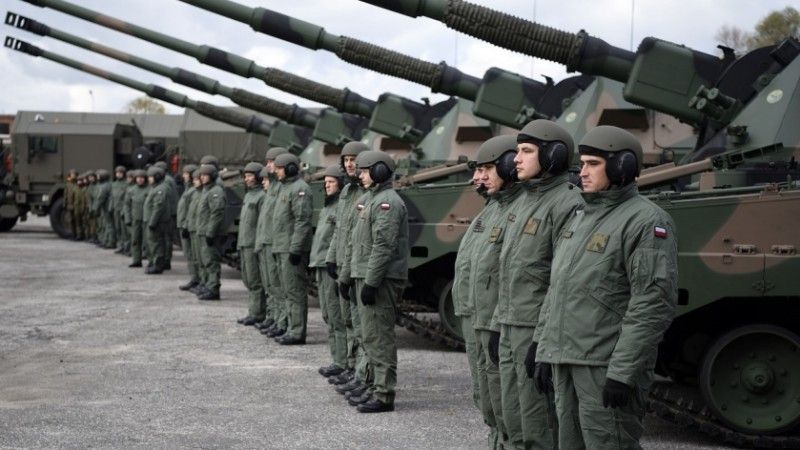Strona główna
HSW Releases Information on Delivery of the Krab Howitzers

HSW S.A. issued a release containing details of delivery of a battery of the Regina squadron-level fire module (Krab howitzers) for the 5th “Lubuski” Artillery Regiment. Currently the aforesaid element has equipment for a whole squadron at its disposal.
Another 8 Krab self-propelled howitzers and auxiliary vehicles have been introduced into the inventory of the Polish military. The event took place on 30th October, at the Sulechów military unit, where the 5th “Lubuski” artillery regiment is stationed. These vehicles form the third battery of the first Squadron-level Fire Module (DMO) element. The deliveries are carried out within the framework of the agreement that assumes delivery of four modules for the Polish Armed Forces.
Elements of the DMO unit handed off today are yet another example of providing the Polish soldiers with new, better equipment, most importantly, manufactured at a Polish facility. This is yet another delivery of modern “Krab” howitzers and support vehicles for that unit. Thanks to this delivery we have a complete modern artillery squadron available in the Lubuskie voivodeship - Mariusz Błaszczak, head of the Polish MoD wrote in his letter addressed to the soldiers stationed in Sulechów.
The delivery has been carried out within the framework of agreement concluded on 14th December 2016, by and between the HSW S.A. company and the Armament Inspectorate of the Polish MoD. The agreement worth 4.5 billion zlotys is one of the most significant defence procurement contracts ever signed in Poland. It envisages delivery of four Squadron-Level Fire Modules (DMO) also known under the name REGINA. HSW emphasized the fact that the three batteries already delivered form the first complete and full DMO element. According to the aforesaid contractual agreement, HSW will be tasked with delivery of another three modules.
Each of the Regina DMOs includes, alongside twenty four 155 mm Krab sphs, 3 WDSz Command-Staff Vehicles, 8 WD Command Vehicles, 6 WA Ammunition Carriers and a single WRUiE Armament and Electronics Repair Vehicle. Third battery of the first DMO element was the final component of that unit to be handed off. The agreement, as a whole, covers delivery of four DMO elements including 96 howitzers plus the support vehicles (command and logistical assets).
155 mm self-propelled Krab howitzer is a world class artillery asset. The purpose of the 155 mm self-propelled howitzer in question is to act against and destroy tube and rocket artillery batteries, command posts, communication nodes, fortified areas, main battle tanks, mechanized and motorized elements in any location or operational context. The howitzers are also used to act against the enemy armour behind the enemy lines and with the use of direct fire. They could also be utilized for the purpose of disabling the enemy logistics. The platform offers rate of fire of 6 shots per minute in an intense firing scenario. The range at which the targets could be destroyed goes up to 40 kilometers.
The howitzer has been fitted with INS/GPS (SAASM enhanced) navigation system, advanced fire control system, air conditioning and filtering system, digital intercom and digital communications system, fire extinguishing and explosion mitigation system, daytime and night vision observation systems for the driver and the commander, and a protection and warning system for the vehicle, allowing for detection of laser rangefinders or target designators aimed at the howitzer. The latter makes it possible to automatically deploy a smokescreen. Krab also features a direct-fire aiming system, ballistic radar and a power supply unit. Apart from the 155 mm cannon, Krab also features a .50-cal. machine gun and 2x4 smoke grenades dispenser.
48 Krab howitzers manufactured at HSW S.A. are currently in service with the Polish military. These vehicles have been manufactured by HSW S.A. over the course of work concerning the subject agreement signed in 2016 and the previous agreement, so called “implementation agreement”. Another 72 platforms are expected to be delivered, in a continuous manner, until the year 2024.
